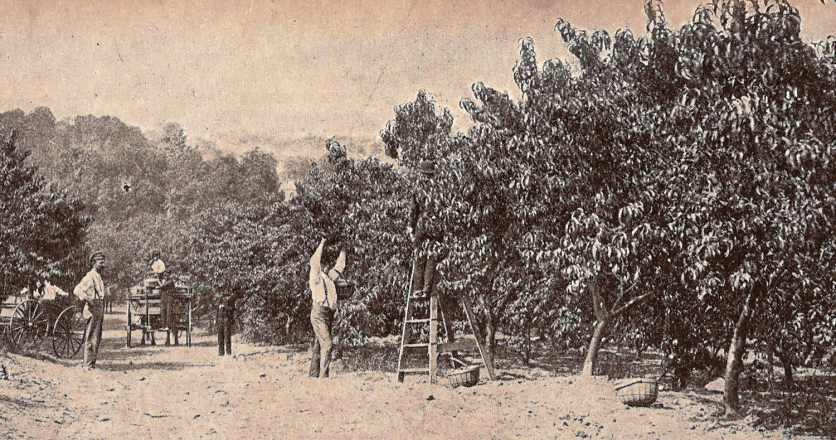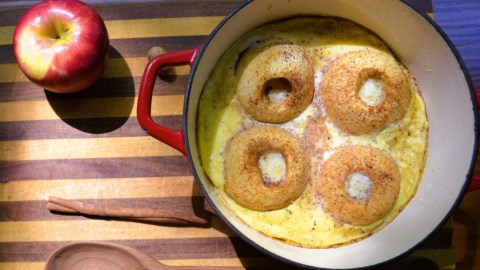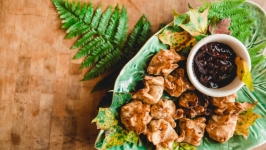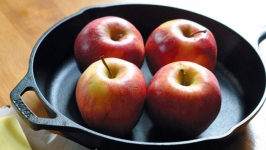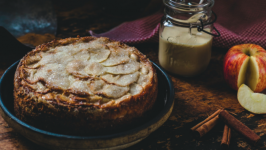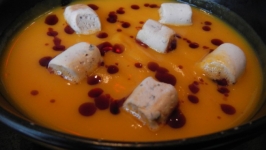Seek No Further
Deep in the holds of the creaking wooden ships of the 1600s, boxes of apple seeds lay in wait. The North American continent had its own small, sour apples, but immigrants from England, Holland, and France all brought their own assortments. When they had cleared the native trees, these apple seeds were planted in the soft ground throughout New England. By 1649, Windsor’s Henry Wolcott was one of many settlers who boasted large orchards with several varietals, and a century later, Europeans grudgingly admitted that these “New World” apples were superior.
Indeed, the climate of Connecticut has always been good for apple tree cultivation, and although inhabitants used this versatile fruit in many ways, for hundreds of years they sweated, ground, separated, pressed, and fermented it for cider. Henry Wolcott’s great-grandson produced 500 hogsheads of cider every year from those Windsor orchards. So much was made in the 1700s that it was exported for profit to Europe and the West Indies as part of the triangle trade.
Domestically, cider proved cheaper and healthier than water, and adults and children drank it with nearly every meal, even though this early cider was mildly alcoholic. In 1745, future chief justice of the Supreme Court, Oliver Ellsworth, said that “men in Windsor assembled in each other’s houses and would drink out a barrel of cider in one night.” Legendary French epicure Jean Anthelme Brillat-Savarin noted the “excellent cider” he was served in Hartford, “so excellent that I could have gone on drinking forever.”
Sometimes, cider was boiled down into syrup, mixed with ice cream, or made into jelly. And, of course, the apples themselves made it into dozens of recipes: roasted, baked, dried, and turned into apple butter or apple sauce. Less sweet than the apples we eat today, they were baked into a spectrum of sweet dishes, called dumplings, puddings, and custards, depending on the cook or the recipe book. These could refer to apples boiled into a spiced mush, softened apples drenched in eggs and sugar, or apples mixed with grated stale bread, milk, and eggs.
Such dishes were often indistinguishable from apple “crumbs” and “Bettys,” though usually “crumbs” topped sliced apples with butter, flour, and sugar, while “Bettys” used breadcrumbs, even though switching those names seems more appropriate. Both were often sprinkled with dried currants and cinnamon and eaten with cream or ice cream. The old recipe books also feature “crisps” and “cobblers,” sometimes identical, sometimes slightly different in ingredients. And the names didn’t stop there: “apple slump,” “apple mose,” “apple crowdy,” and others appear throughout the literature.
At least “apple pies” were somewhat consistent, with thick, hard, meat-dripping crusts that made Mark Twain’s teeth ache. But the filling still varied wildly, some versions utilizing stewed and some fresh apples, some swearing by lemon peel, some championing rose water. Nutmeg or cinnamon? Topless, bottomless, or full crust? No one agrees. Another variation that became popular in Connecticut was Pork Apple Pie, strangely called “sea pie” (which we would expect to include fish), consisting of dried apples, salt pork, and molasses baked in a pastry. This was served for dinner, not dessert. Indeed, many of these apple dishes were served at any meal as appetizer, main dish, or dessert, depending on the whims of the chef or the diners themselves.
Our state grew hundreds of varieties of apples, from Roxbury Russet to Westfield Seek-No-Further, until the late 19th century. Between 1885 and 1905, a full 90% of the orchards were destroyed by a scale insect. Cider ceased to be drink-of-choice as citizens turned to wine and beer. More apple trees died in the winter of 1917. But a century later, apples thrive at places like Averill Farm in Washington, Rogers Orchards in Southington, and Ellsworth Hill in Sharon. Honeycrisp, Macoun, Northern Spy, and IdaRed — dozens of varieties — await the tastebuds of modern foodies, while new apple wines and apple ciders are created by new generations of brewers and vintners. With so many options, the apple is better than ever.
Here's a popular 19th century treat to celebrate the history and versatility of Connecticut apples. This adaptation of Bird’s Nest Pudding is based on educational pioneer Catharine Beecher’s version from Miss Beecher’s Domestic Receipt Book, published in 1850.



